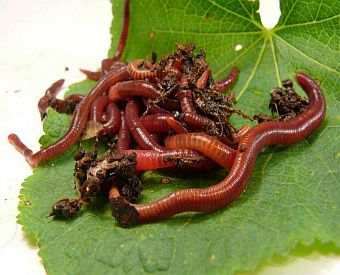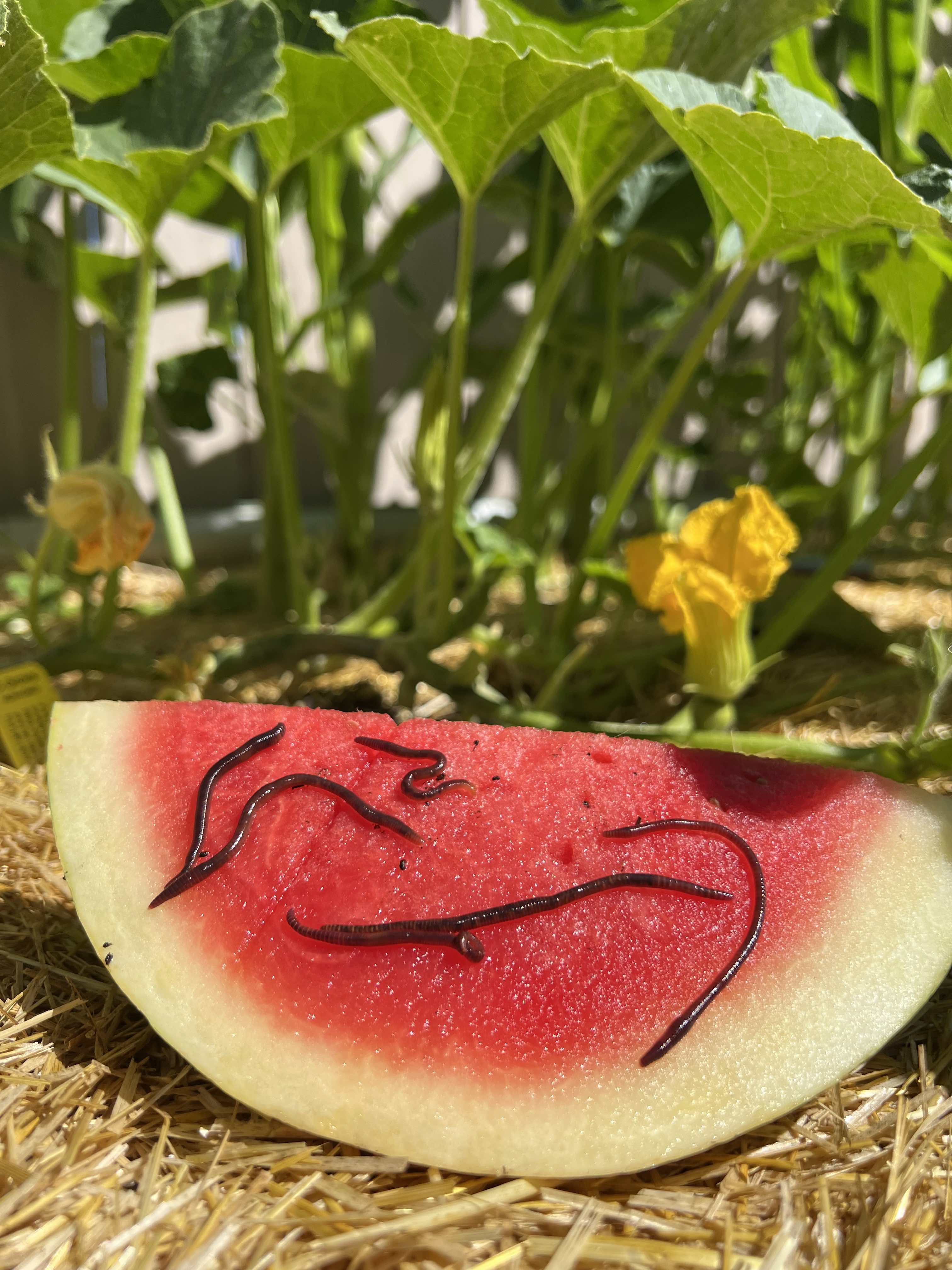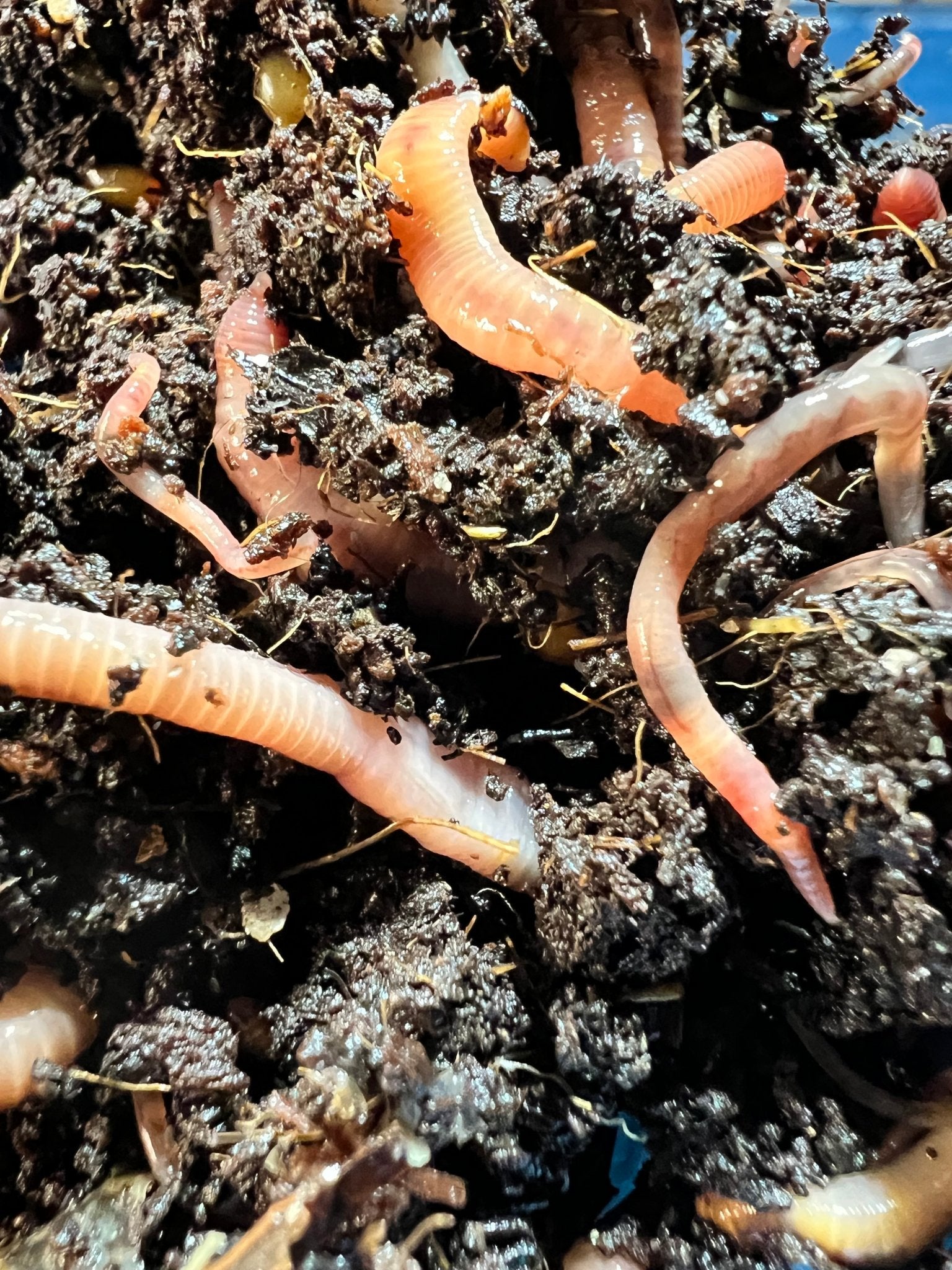Organic Composting with Red Wiggler Worms - Increase Your Garden's Growth
Wiki Article
Red Wiggler Worms Demystified: Unlocking the Keys of Vermiculture for Greener Living and Nutrient-Rich Soil
In the realm of sustainable methods for enriching soil top quality and promoting eco-conscious living, red wiggler worms play a crucial yet commonly neglected duty. Red Wiggler Worms. Recognizing the details of caring for these worms, maximizing their atmosphere, and harnessing their castings can lead to a greener way of life and much healthier soil for plants to prosper.The Function of Red Wiggler Worms
Red Wiggler worms play a vital duty in composting systems by efficiently breaking down raw material right into nutrient-rich spreadings. These starved eaters consume a variety of natural materials, such as kitchen scraps, lawn waste, and paper products. As they feed, the worms' digestive procedures damage down the raw material right into a fine, dark, and nutrient-dense material referred to as worm castings or vermicompost.The castings produced by Red Wiggler worms are highly valuable for dirt wellness and plant development. They are rich in necessary nutrients like phosphorus, potassium, and nitrogen, which are essential for sustaining healthy and balanced plant growth. Additionally, worm spreadings contain helpful microbes and enzymes that assist enhance dirt structure, increase water retention, and boost nutrient uptake by plants.
Benefits of Vermicomposting

In addition, vermicompost, the nutrient-rich end product of vermicomposting, acts as an outstanding organic plant food and soil conditioner. It improves soil framework, enhances dirt aeration, and boosts soil wetness retention. These properties add to much healthier plants with stronger root systems and far better resistance to conditions and parasites. Vermicompost also enriches the dirt with important nutrients like phosphorus, nitrogen, and potassium, promoting plant development and total soil fertility.
In addition, vermicomposting assistances sustainable horticulture practices by supplying a natural and chemical-free choice to artificial plant foods. Red Wiggler Worms. This eco-friendly strategy not just improves the soil yet additionally assists decrease dependence on damaging chemicals, promoting a greener and more lasting method of horticulture
Establishing Up a Worm Bin
When establishing a worm container for vermicomposting, correct configuration is essential to ensure the success of the composting procedure. The first action in establishing a worm bin is choosing an appropriate container. This can be a plastic container or wooden box that supplies sufficient space for the worms to move and has correct drain openings to stop waterlogging. Next, a bed linen material such as shredded paper, cardboard, or coconut coir must be included to the container. This bed linens supplies a comfy atmosphere for the worms and aids keep dampness levels.After adding the bed linens, present the red wiggler worms to the container. The worms should after that be provided with food scraps such as fruit and vegetable peels, coffee premises, and eggshells.
Regularly monitor the moisture degrees and temperature level in the worm container to make sure optimal problems for the worms. With proper arrangement and upkeep, the worm bin will successfully transform natural waste right into nutrient-rich compost for your plants and garden.
Harvesting Worm Castings
To efficiently accumulate nutrient-rich worm castings from your vermicomposting system, a methodical harvesting technique is vital. When it comes time to gather the worm spreadings, there are a few key actions to follow to make certain a successful procedure. Stop adding fresh food scraps to one side of the worm bin for a couple of weeks prior to harvesting. This motivates the worms to migrate to the side with fresh bed linens and food, making it much easier to dig the spreadings from the other side.
Troubleshooting Common Issues
Determining and resolving common challenges that may emerge throughout the vermicomposting procedure is critical for preserving a efficient and healthy worm container. One common problem that vermicomposters encounter is overfeeding. Including excess food scraps can result in an accumulation of dampness and acidity in the worm container, possibly harming the worms. To avoid this, feed the worms in small amounts, making sure that the food scraps are effectively broken down prior to adding much more. An additional concern is unpleasant smells rising from the worm container. Foul scents indicate anaerobic conditions, usually triggered by overwatering or inadequate ventilation. To correct this, change the dampness levels by including dry bedding products like shredded paper or cardboard and increase aeration by turning the bedding regularly.
In best site addition, if the worm populace is these details decreasing or the worms appear unhealthy, maybe because of environmental stressors such as severe temperature levels or pH degrees. Checking these aspects and making essential changes is crucial for the wellness of the worms. By fixing these common problems quickly, vermicomposters can make sure a smooth and successful vermicomposting process while keeping a prospering worm population.

Final Thought
In verdict, red wiggler worms play a vital role in vermiculture by breaking down raw material right into nutrient-rich soil. The benefits of vermiculture include greener living and improved soil top quality. Establishing up a worm container is vital for successful vermiculture, and collecting worm spreadings provides useful compost for gardening. By comprehending and fixing common issues, individuals can unlock the keys of vermiculture for lasting living and much healthier dirt.As they feed, the worms' digestive system procedures break down the natural matter right into a penalty, dark, and nutrient-dense product understood as worm castings or vermicompost.
The castings created by Red Wiggler worms are extremely useful for soil health and plant growth. Including excess food scraps can lead to an accumulation of dampness and acidity in the worm bin, potentially damaging the worms.In addition, if the worm population is declining or the worms show up unhealthy, it could be due to environmental stressors such as severe temperatures or pH degrees. Setting up a worm bin is necessary for successful vermiculture, and harvesting worm castings supplies valuable compost for gardening.
Report this wiki page